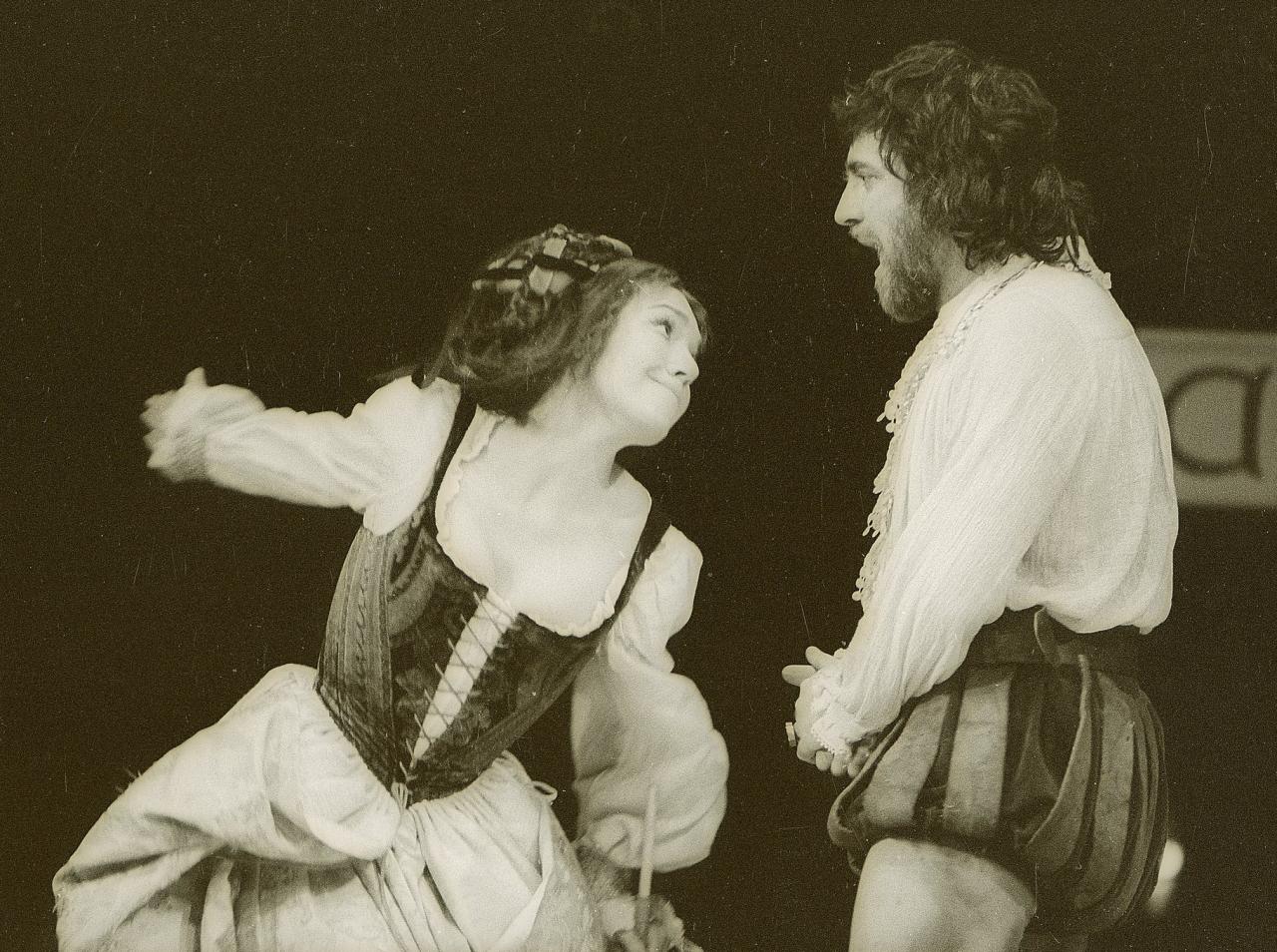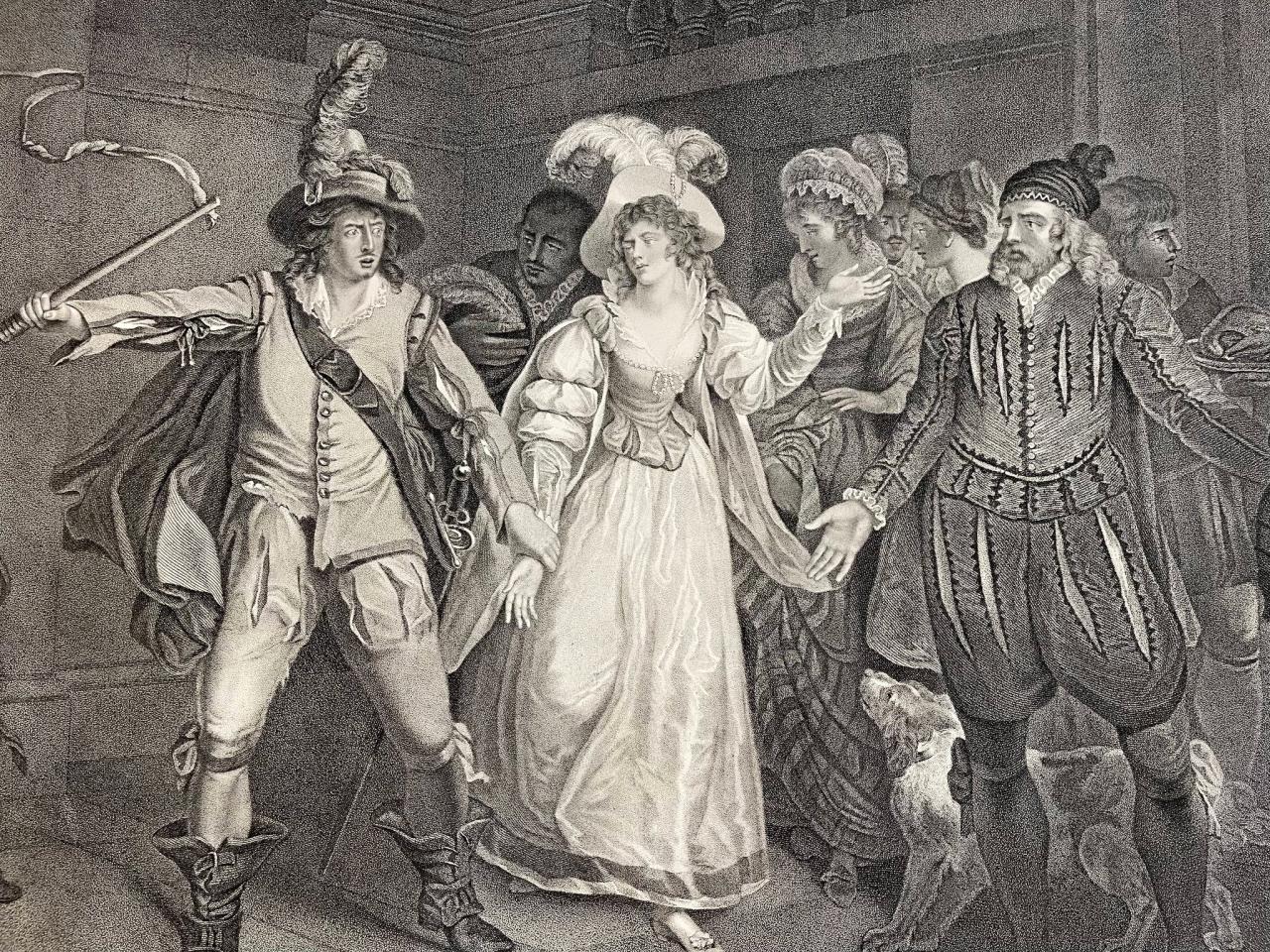Act 4 scene 5 taming of the shrew – In Act 4, Scene 5 of William Shakespeare’s “The Taming of the Shrew,” we witness a pivotal moment in the play’s exploration of gender roles and power dynamics. Katherina, the headstrong and independent heroine, undergoes a significant transformation as she begins to embrace her role as a subservient wife under the influence of her cunning husband, Petruchio.
This scene is a microcosm of the play’s larger themes, providing insights into the societal expectations and cultural norms of the Elizabethan era.
Through a masterful use of dialogue, soliloquies, and dramatic irony, Shakespeare deftly unravels the complexities of marriage, power, and societal expectations. The scene’s structure and pacing contribute to its overall impact, creating a sense of anticipation and suspense that keeps the audience engaged from beginning to end.
Character Analysis

In Act 4, Scene 5, Katherina undergoes a significant transformation. Petruchio’s harsh treatment has broken her spirit, and she now exhibits the submissiveness that he has been demanding.
Petruchio’s Behavior
- Petruchio continues to assert his dominance over Katherina, humiliating her in front of others and denying her basic needs.
- However, his behavior also shows signs of genuine affection, as he attempts to protect her from the harsh judgment of society.
Bianca’s Role
- Bianca’s presence in this scene highlights the contrast between her and Katherina.
- Bianca’s gentle and obedient nature reinforces the societal expectation that women should be subservient to men.
Themes and Motifs: Act 4 Scene 5 Taming Of The Shrew
Power Dynamics and Gender Roles
This scene powerfully illustrates the power dynamics between men and women in Elizabethan society.
- Petruchio’s treatment of Katherina demonstrates the extent to which men could control and dominate women.
- Katherina’s submission challenges traditional gender roles, but ultimately reinforces the idea that women should be subordinate to men.
Imagery and Symbolism
- The taming of a shrew is a metaphor for the process of controlling and dominating a woman.
- The use of animal imagery, such as “shrew” and “wildcat,” reinforces the idea of Katherina as a creature that needs to be tamed.
Marriage and Societal Expectations
This scene explores the complex nature of marriage and the expectations placed upon it.
- Petruchio and Katherina’s marriage is a reflection of the societal norms of the time.
- The play challenges these norms, but ultimately reinforces the idea that marriage is a patriarchal institution.
Literary Devices and Techniques

Dialogue and Soliloquies, Act 4 scene 5 taming of the shrew
The dialogue in this scene is sharp and witty, with both Petruchio and Katherina engaging in verbal sparring.
- Petruchio’s use of puns and wordplay highlights his wit and intelligence.
- Katherina’s soliloquy reveals her inner thoughts and feelings, providing a glimpse into her transformation.
Dramatic Irony and Foreshadowing
- The audience is aware of Petruchio’s true intentions, creating a sense of dramatic irony.
- The scene foreshadows the eventual reconciliation between Petruchio and Katherina.
Structure and Pacing
The scene is carefully structured to build tension and suspense.
- The initial confrontation between Petruchio and Katherina is followed by a period of calm, which is then broken by Katherina’s outburst.
- The pacing of the scene gradually increases, culminating in the final confrontation between Petruchio and Katherina.
Historical and Cultural Context
Societal Norms and Gender Roles
The scene reflects the societal norms and gender roles of the Elizabethan era.
- Men were expected to be dominant and controlling, while women were expected to be submissive and obedient.
- Marriage was seen as a way to control women and ensure their obedience.
Influence of Contemporary Events and Beliefs
- The scene may have been influenced by the Protestant Reformation, which emphasized the importance of male authority in the family.
- The play also reflects the rise of humanism, which emphasized the importance of individual reason and experience.
Critical Reception and Interpretation

Critical Interpretations
This scene has been interpreted in various ways by critics.
- Some critics see it as a reflection of the patriarchal society of the time, while others see it as a critique of that society.
- Some critics have also argued that the scene is a celebration of female empowerment.
Staging and Adaptations
- The scene has been staged and adapted in a variety of ways, reflecting the different interpretations of the play.
- Some productions have emphasized the comedic aspects of the scene, while others have focused on its darker themes.
Modern Audiences
Modern audiences continue to be fascinated by this scene, as it explores timeless themes of power, gender, and marriage.
- However, some modern audiences may find the scene’s depiction of gender roles to be problematic.
- Despite this, the scene remains a powerful and thought-provoking piece of theater.
Question Bank
What is the significance of Katherina’s transformation in Act 4, Scene 5?
Katherina’s transformation in this scene is a pivotal moment in the play, as it marks her acceptance of her role as a subservient wife. This transformation is a reflection of the societal expectations of women during the Elizabethan era, where they were expected to be obedient and submissive to their husbands.
How does Petruchio’s behavior contribute to Katherina’s transformation?
Petruchio’s cunning and manipulative behavior plays a significant role in Katherina’s transformation. By employing tactics such as sleep deprivation, isolation, and psychological manipulation, Petruchio gradually breaks down Katherina’s resistance and forces her to conform to his will.
What is the role of Bianca in this scene?
Bianca, Katherina’s younger sister, serves as a contrast to Katherina. While Katherina is headstrong and independent, Bianca is gentle and submissive. This contrast highlights the different expectations that society had for women during the Elizabethan era.